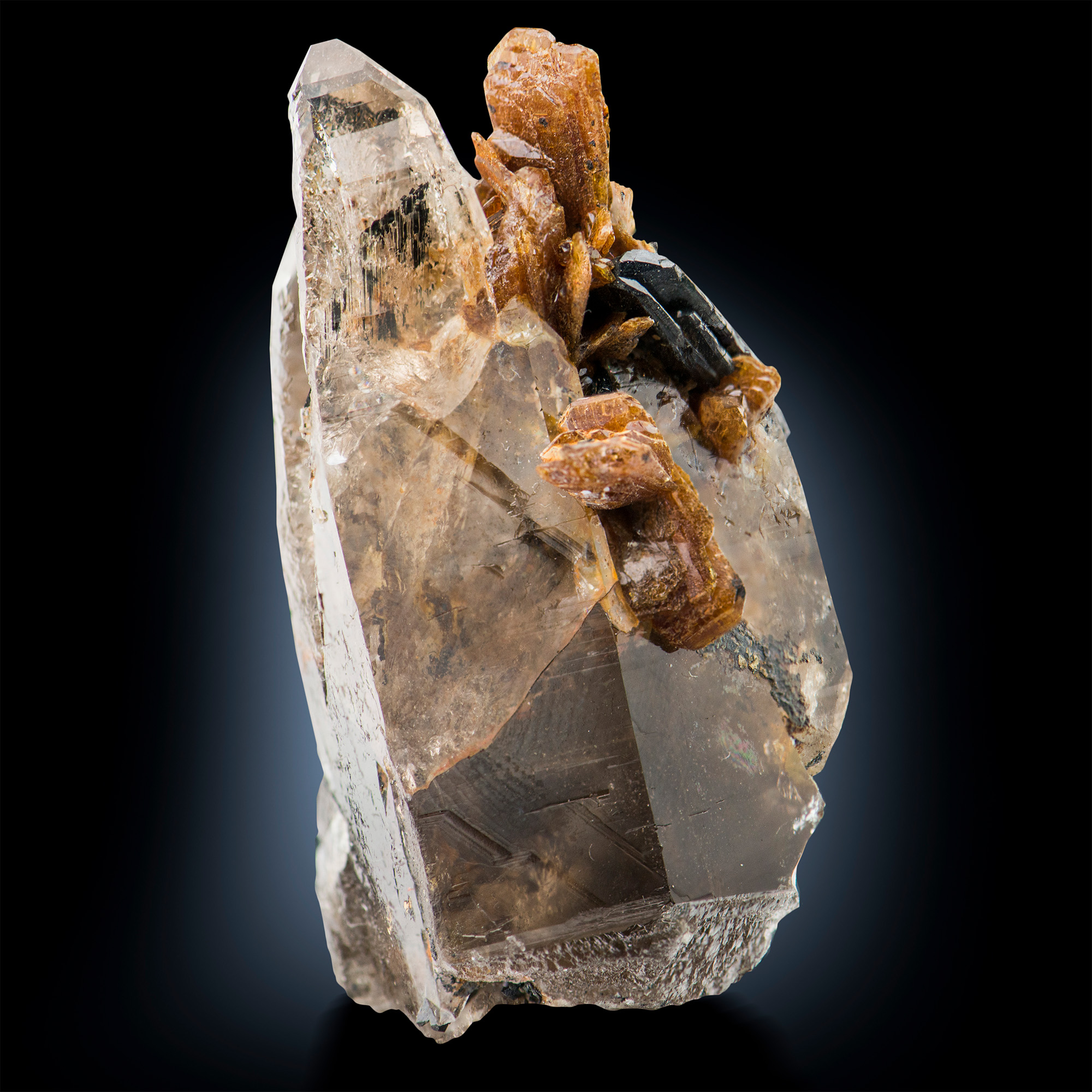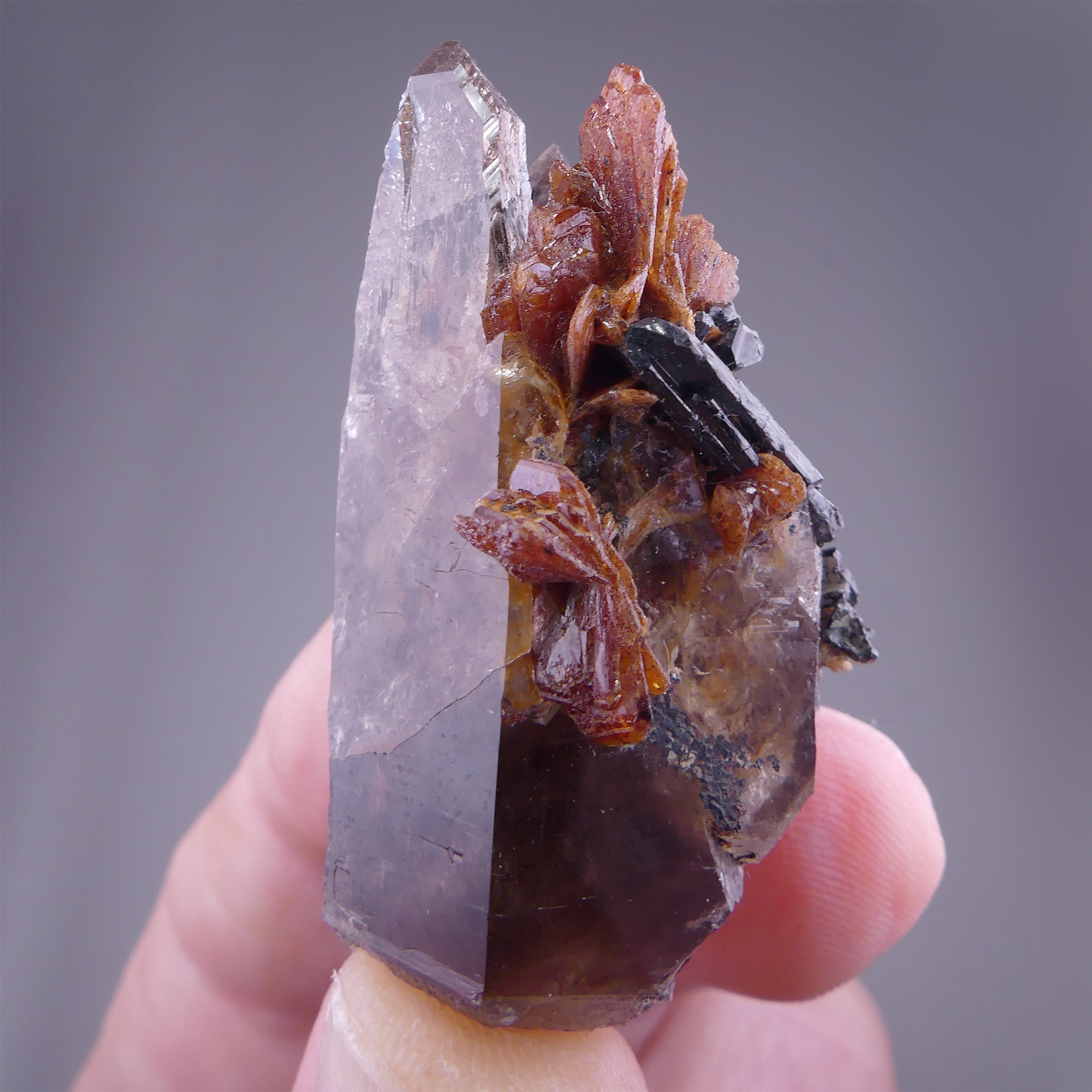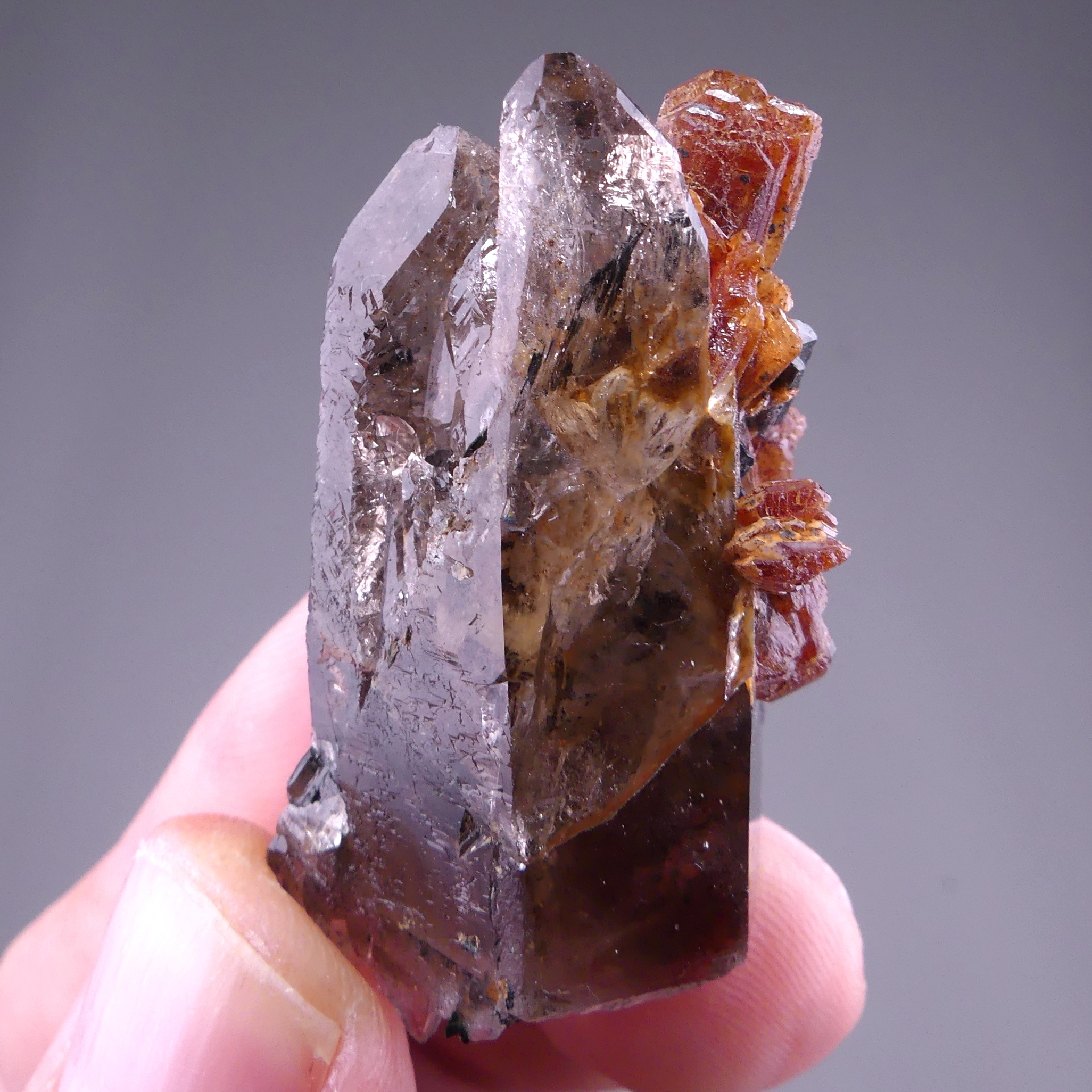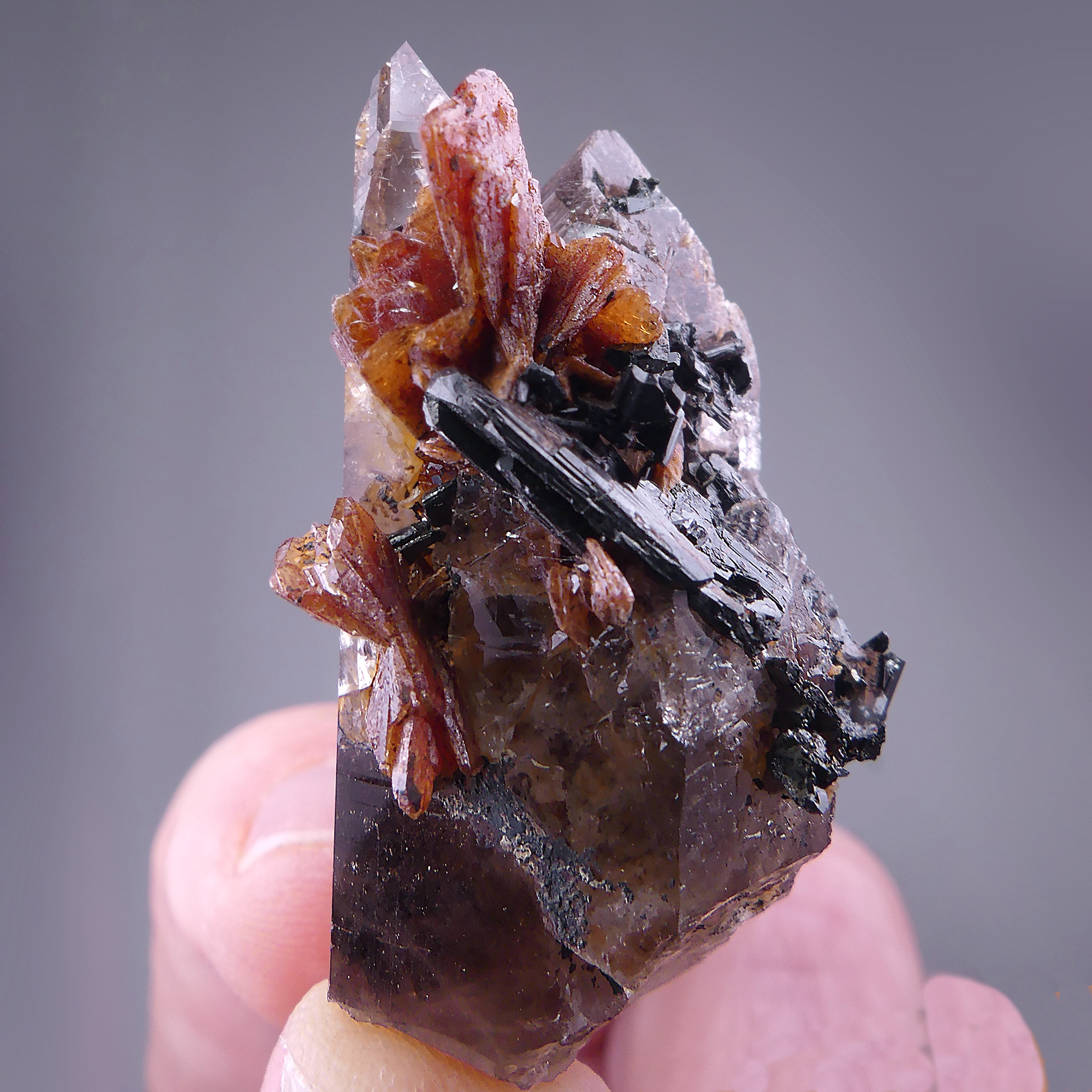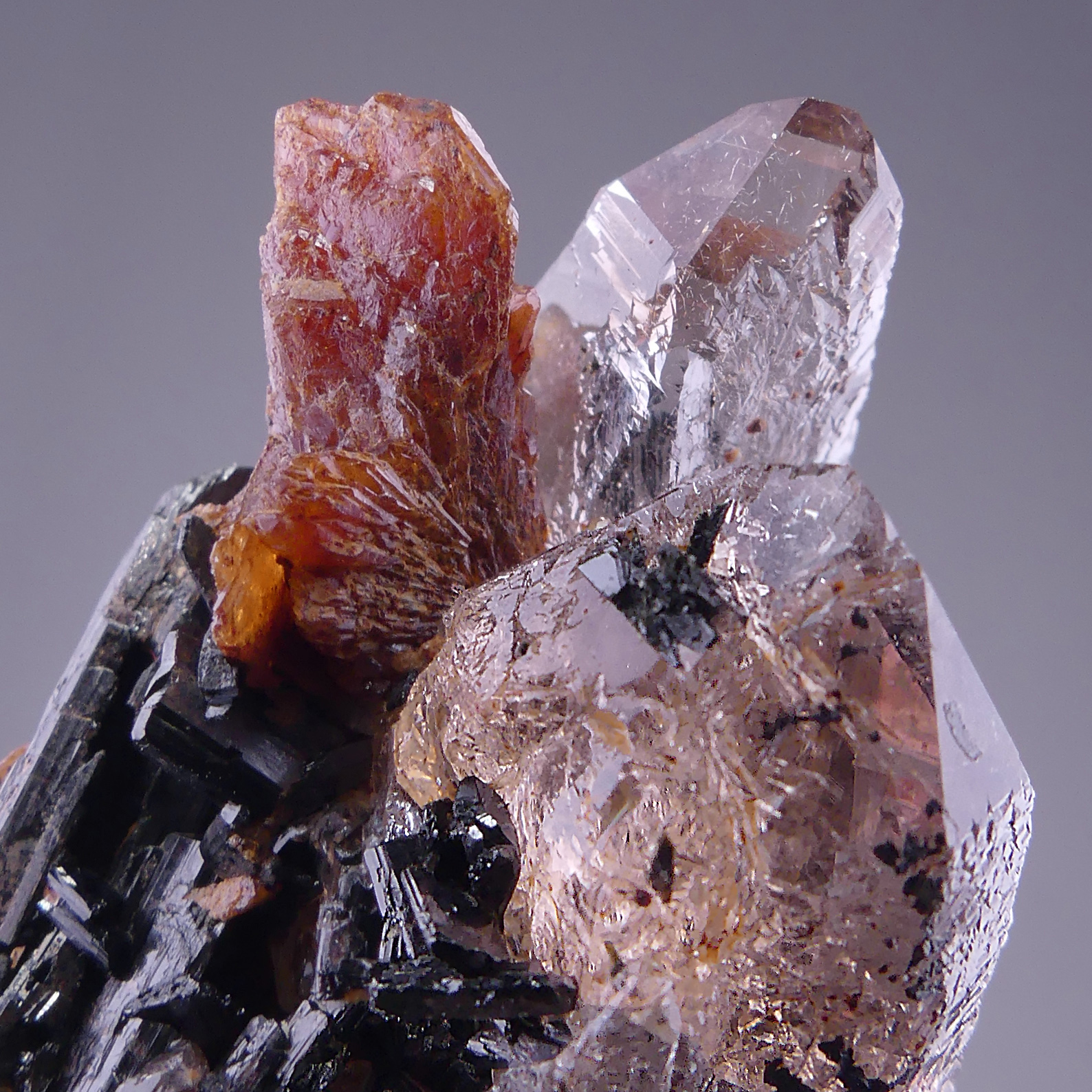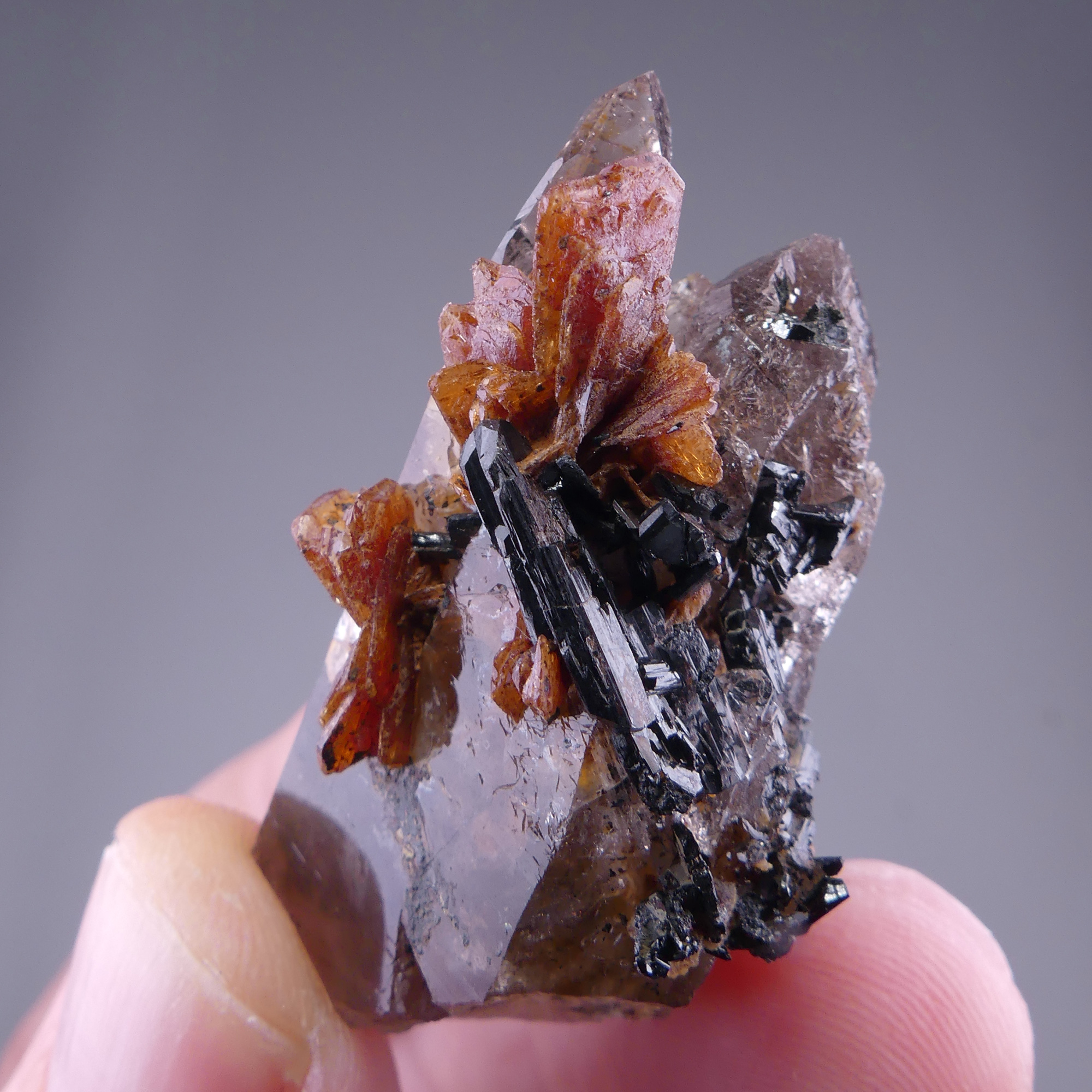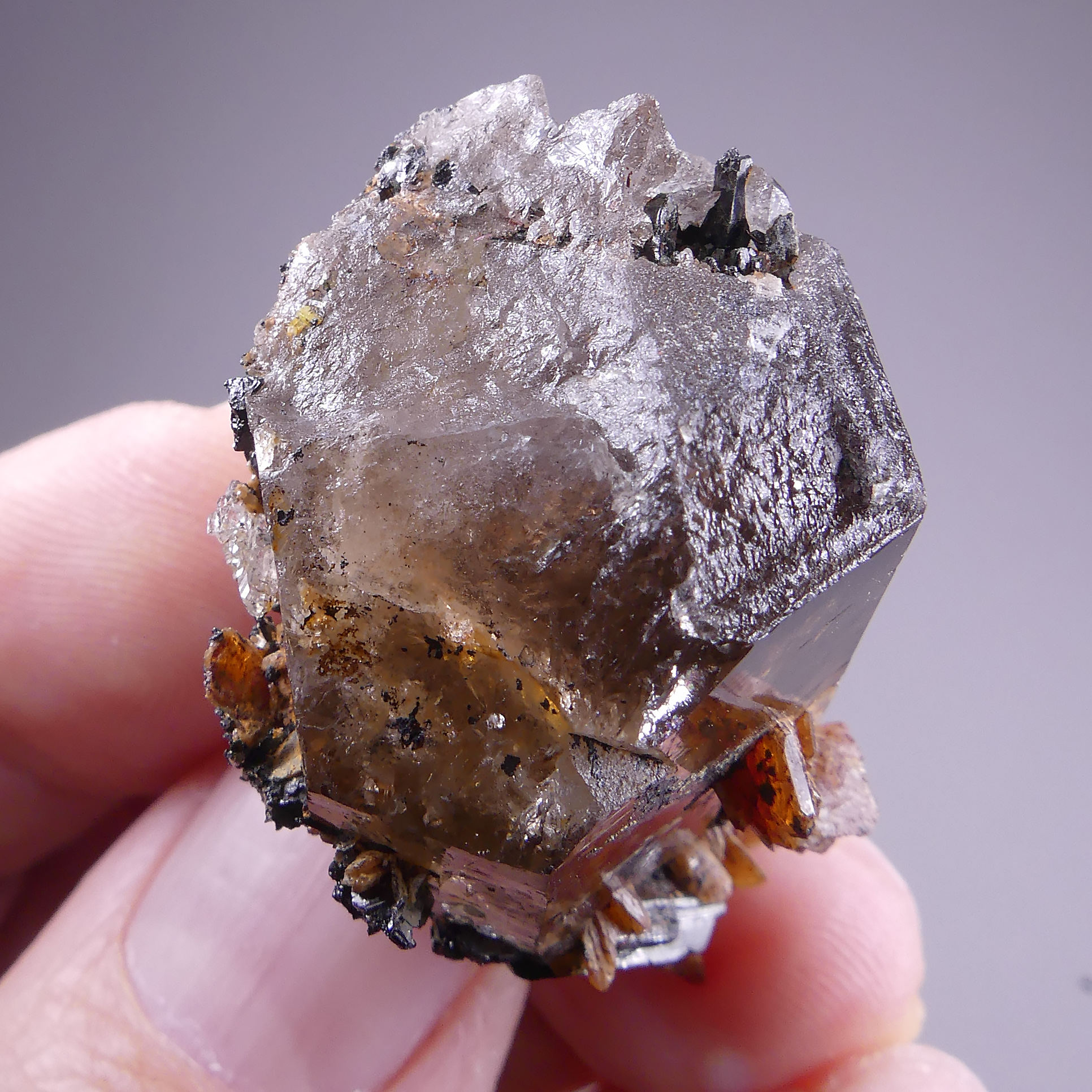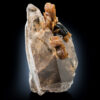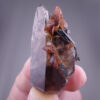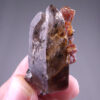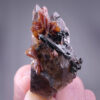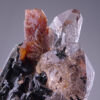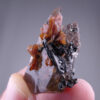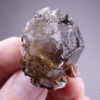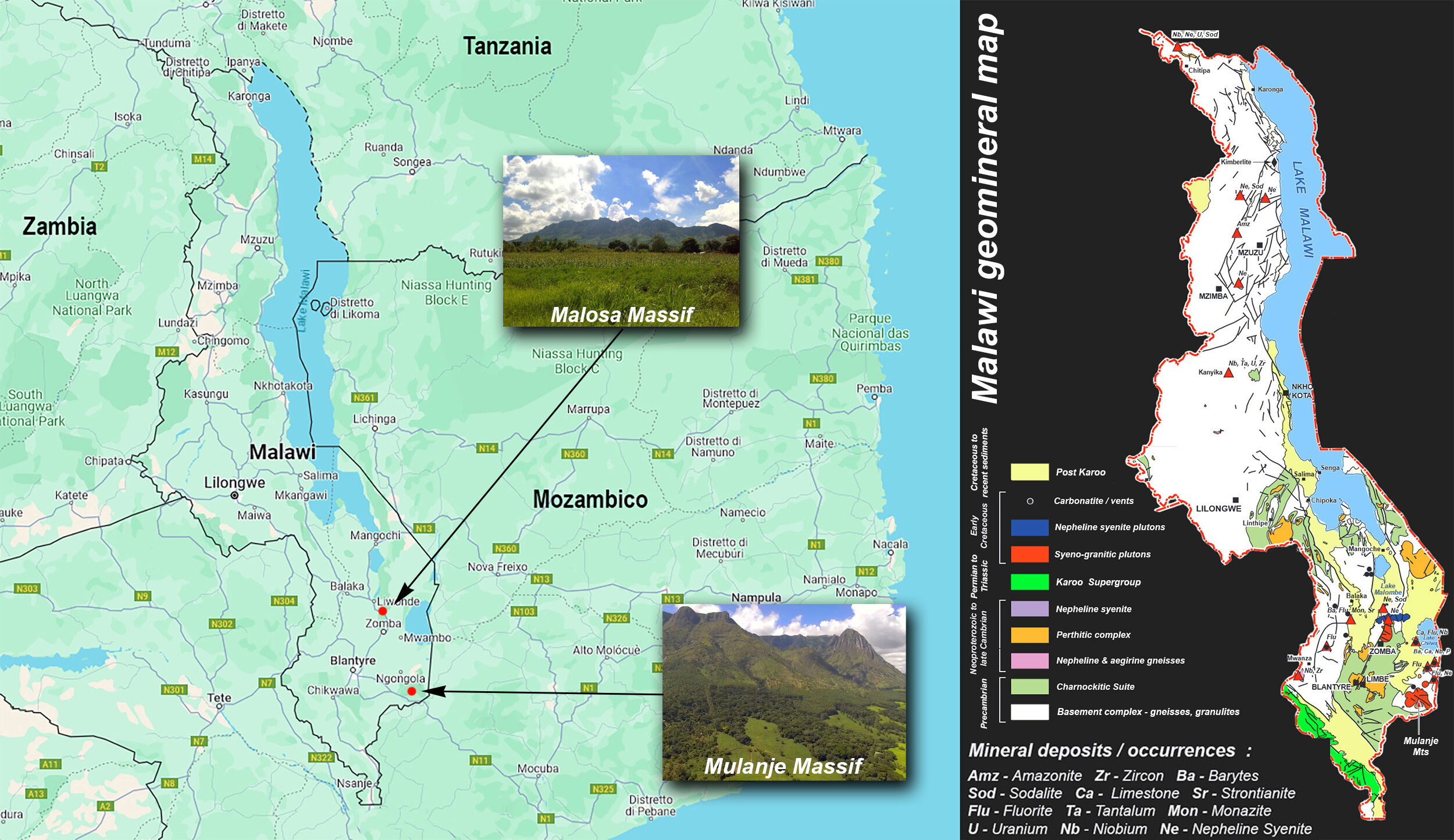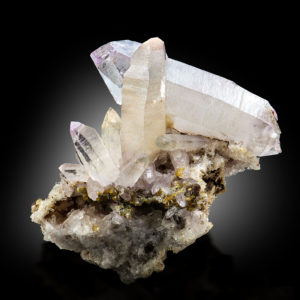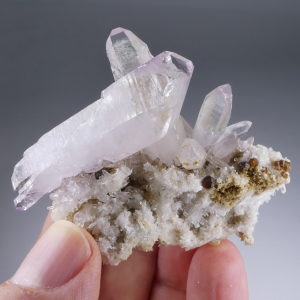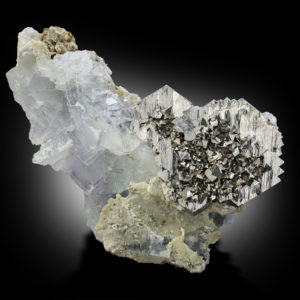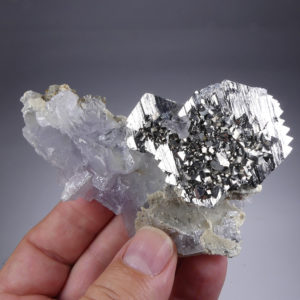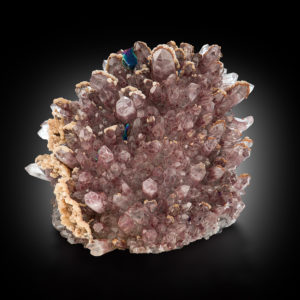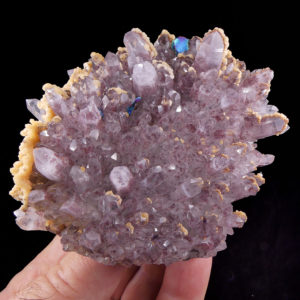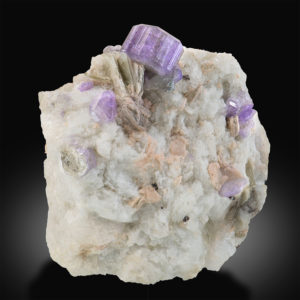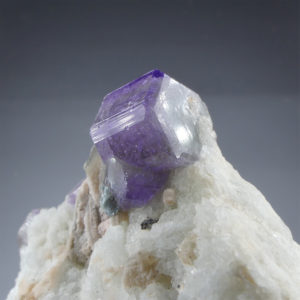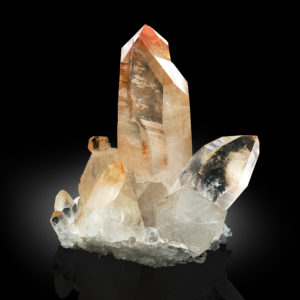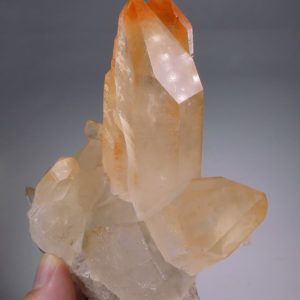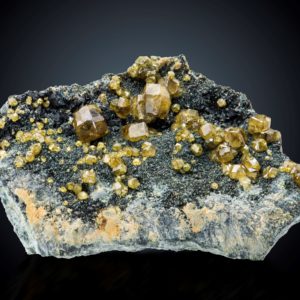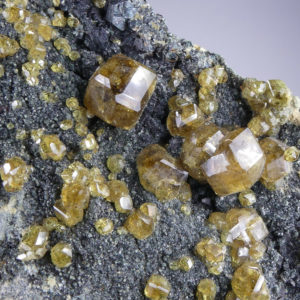MONAZITE, QUARTZ – Malawi – GFS0407
In stock
€ 390,00 +TAX
Monazite-(Ce), Quartz
Mount Malosa, Zomba, Southern Region, Malawi
4,2×2,2×2,2 cm.
Outstanding miniature for rarity and aesthetics. Monazite-(Ce) is widespread, as accessory mineral, in granites, syenites, and their pegmatites, in carbonatites and volcanoclastic rocks, in fissure veins and high-grade metamorphic rock, but absolutely uncommon in fine crystals.This specimen showcases two groups of Monazite crystals arranged in an extraordinarily aesthetic manner on a smoky Quartz cluster, one towering among the sparkling quartz tips and another, on the side, surprisingly shaped like a butterfly…perfect synthesis of rarity and beauty. Monazite-(Ce) is a rare phosphate mineral rich in Cerium, commonly reddish brown to brown, mainly found in the Ural Mountains (Russia), in Norway, in Madagascar, in Ohio and North Carolina (USA), in Minas Gerais (Brazil) and obviously in Malawi.
The geoology of Malawi is characterized by Precambrian metamorphic and igneous rocks which form part of the polyphase East African Orogen. Rift-related sedimentation and igneous activity during the late Paleozoic (Karoo System) and the late Mesozoic (Chilwa Province) have produced a great variety of rocks that underwent strong chemical weathering and erosion when the entire region received its final shape by peneplanation and fluvial incision during the Cenozoic under (sub)tropical climatic conditions. The prevailing lithology comprises crystalline rocks of Precambrian age, in large parts, covered by a blanket of Cenozoic rocks. Paleozoic and Mesozoic units are patchily distributed. Nevertheless, some of these rocks, especially those of Permo-Triassic and Jurassic to Cretaceous age, deserve special attention as they host significant non-metallic deposits.
The Zomba Plateau, also called Zomba Massif, is a mountains group in southern Malawi. The plateau is roughly pear-shaped and composed by twoo areas, the southern portion is known as Zomba Mountain and the northern portion as Malosa Mountain. The plateau largely made up of granitic syenite, an igneous rock that intruded into the older metamorphic rocks that make up the highlands during the late Jurassic and Cretaceous periods 150-65 million years ago.
Mount Malosa consists of a heterogeneous mixture of pegmatite syenite and granite; the geology of the region that contains the aegirine-bearing pegmatites has been fairly well documented and from the collector’s standpoint well known for producing outstanding crystals of Aegirine associated with aesthetic smoky Quartz, Microcline, and Zircon. However, with further research conducted in recent decades, many other rare species such as Parisite, Epididymite, Fergusonite and Eudialyte have also been discovered. For more info ![]() and
and ![]()
In stock
Additional information
| Weight | 0.024 kg |
|---|---|
| Dimensions | 4.2 × 2.2 × 2.2 cm |
| Country | |
| Location | |
| Species |

